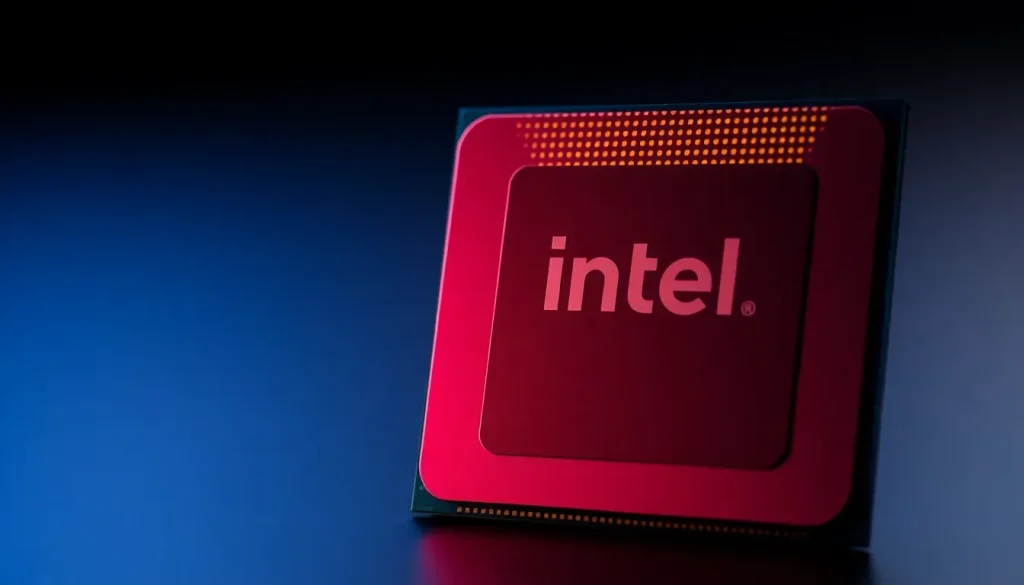Intel may produce AMD processors, its biggest competitor

In a surprising twist, the landscape of semiconductor manufacturing may be shifting dramatically. Intel, once the undisputed leader in chip production, is now considering an unprecedented collaboration with its long-time rival, AMD. This potential partnership opens up a world of possibilities and challenges that could reshape the future of computing power.
As the tech industry grapples with the demands of modern computing, both companies are at a crossroads, leading to discussions that could redefine their strategies and market positions. The implications of this collaboration could extend far beyond mere profit margins, affecting innovation, supply chains, and even geopolitical considerations.
- Intel's struggles in the competitive chip market
- Intel could manufacture AMD chips in the U.S.
- Financial investments fueling the collaboration
- Technical considerations for the collaboration
- Intel's advanced manufacturing nodes
- Potential impact on the semiconductor landscape
- Conclusion: A new era for Intel and AMD?
Intel's struggles in the competitive chip market
For years, Intel and AMD have vied for dominance in the processor market, each striving to outdo the other with cutting-edge technology and superior performance. However, in recent years, Intel has faced significant challenges that have hindered its ability to compete effectively. Once celebrated for its innovative designs and manufacturing prowess, Intel has found itself in a downward spiral due to several factors:
- Design Flaws: Poor decisions in design have led to underwhelming product releases that failed to meet consumer expectations.
- Manufacturing Delays: Intel has struggled with delays in its production processes, causing it to miss critical launch windows for new products.
- Increased Competition: The rise of AMD, with its successful Ryzen series, has intensified competition and drawn customers away from Intel.
These challenges have compelled Intel to rethink its approach, leading to the exploration of a partnership with AMD, a move that would have been unthinkable just a few years ago.
Intel could manufacture AMD chips in the U.S.
Recent reports from Semafor suggest that Intel is in preliminary talks to manufacture AMD chips in the United States. While these discussions are in their infancy and details remain scarce, the mere possibility signifies a substantial shift in the semiconductor landscape.
This potential collaboration is not merely a response to competitive pressures; it is also indicative of a broader trend towards reshoring semiconductor manufacturing. With concerns about supply chain vulnerabilities exacerbated by geopolitical tensions, both companies recognize the importance of manufacturing critical components domestically.
Financial investments fueling the collaboration
The possible agreement between Intel and AMD is part of a larger strategy to enhance U.S. semiconductor manufacturing capabilities. Recently, Intel secured a $5 billion investment from NVIDIA to support the development of data center chips, while SoftBank has promised to invest up to $2 billion to bolster high-performance chip production on U.S. soil. This influx of capital reflects a concerted effort to revitalize the semiconductor industry and reduce reliance on overseas production.
Technical considerations for the collaboration
Although the prospect of Intel manufacturing AMD chips is intriguing, several technical and logistical challenges must be addressed. The feasibility of such an arrangement depends on various factors:
- Manufacturing Nodes: Intel operates multiple manufacturing nodes, but not all are equipped for mass production. For instance, Intel 7 (10 nm) is currently active, while Intel 4 (7 nm) is in initial production.
- Architectural Limitations: AMD’s high-end processors, such as the Ryzen 9000 series, rely on advanced technologies like chiplets and 3D packaging, areas where TSMC currently excels.
- Intellectual Property Risks: As direct competitors, ensuring the protection of proprietary designs and manufacturing methods will be crucial to avoid potential conflicts.
Given these complexities, it is clear that producing AMD's flagship processors may not be feasible for Intel. However, there may be opportunities for Intel to manufacture less critical components or secondary chipsets that do not require leading-edge technology.
Intel's advanced manufacturing nodes
Understanding Intel's manufacturing capabilities provides insight into what types of chips might be produced under a partnership with AMD. Here is a brief overview of Intel's node progression:
| Node | Size | Status |
|---|---|---|
| Intel 7 | 10 nm | In production (Alder Lake, Raptor Lake) |
| Intel 4 | 7 nm | Initial production phase |
| Intel 3 | 5 nm | Validation stage |
| Intel 18A | 1.8 nm | Expected launch with Meteor Lake |
This table illustrates the current state of Intel's manufacturing nodes, highlighting the challenges that come with producing cutting-edge processors for AMD.
Potential impact on the semiconductor landscape
The collaboration between Intel and AMD could have significant ramifications for the semiconductor industry:
- Increased Competition: A successful partnership could force other manufacturers to innovate at a faster pace.
- Geopolitical Considerations: Strengthening domestic manufacturing aligns with national interests in technology and security.
- Consumer Benefits: Enhanced supply chains could lead to better pricing and availability of advanced processors for consumers.
Ultimately, this alliance may serve not only as a response to current market conditions but also as a strategic move to position both companies favorably in an evolving technological landscape.
Conclusion: A new era for Intel and AMD?
The possibility of Intel manufacturing chips for AMD marks a significant turning point in the semiconductor industry. As both companies navigate the complexities of this potential partnership, the outcome could reshape the competitive dynamics of the market and set the stage for a new era of collaboration in technology. The implications of these developments will be closely watched by industry analysts, tech enthusiasts, and consumers alike.
For a deeper dive into the rivalry between Intel and AMD, check out this informative video:




Leave a Reply